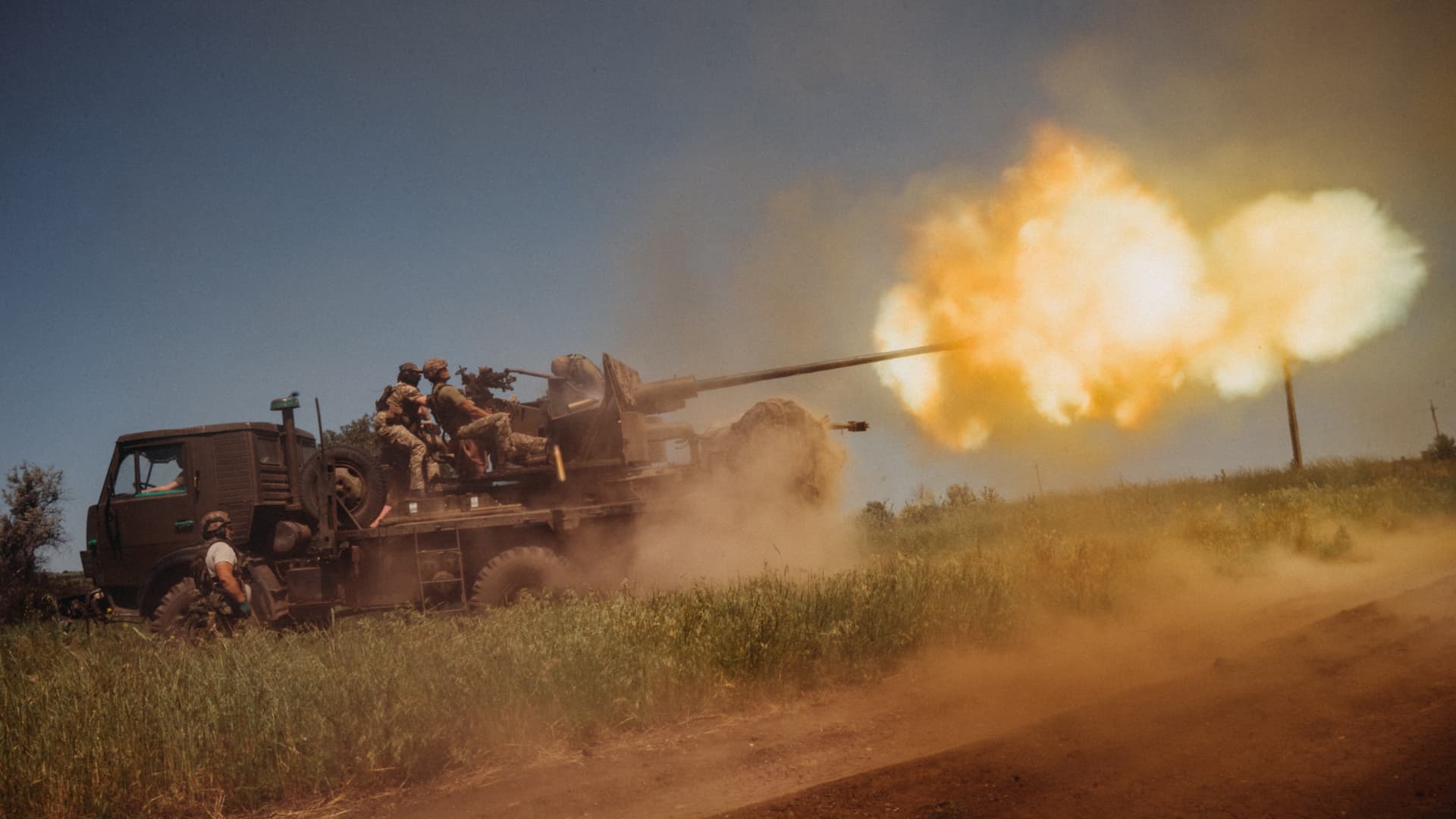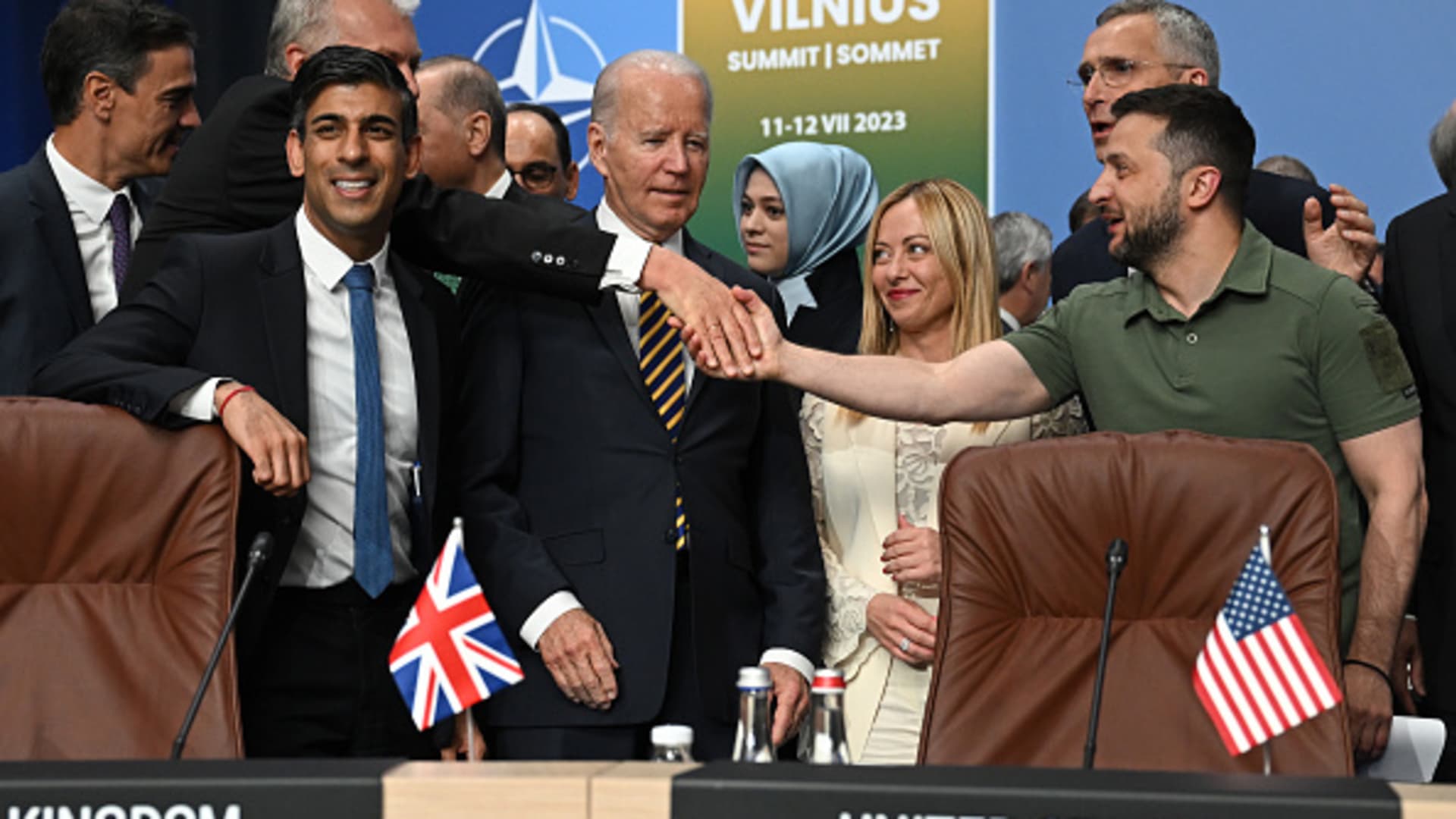
- Ukraine's forces are confronting extensive Russian defensive fortifications along a 600-mile front line, and the counteroffensive is unlikely to go Ukraine's way this year.
- Western governments could be supporting Ukraine into 2025.
- Ukraine will have to make choices over how the war ends and what that looks like, and a frozen conflict seems the most likely scenario.
The war between Russia and Ukraine entered a new phase this summer when Kyiv launched its much-anticipated counteroffensive, and there were hopes Ukraine would regain the upper hand.
Watch NBC6 free wherever you are
Instead, its forces are facing a 600-mile front line and extensive Russian defensive fortifications — in some places up to 19 miles deep — that were built in winter while Ukraine was waiting for more heavy weaponry from its allies before launching its counteroffensive in June.
It's become clear that the counteroffensive won't produce quick results and that success — however that might be measured in terms of retaking Russian-occupied territory — is not guaranteed.
Get local news you need to know to start your day with NBC 6's News Headlines newsletter.
Military experts warn that this means the war is likely to be prolonged, putting immense pressure on Ukraine to fight for several more years to come, potentially, and on its international partners to commit billions of dollars more in military, humanitarian and financial resources.
"Ukraine has to show it can make progress, but everybody knows that, given the size of the force that they have, that they are not going to throw every Russian out of Ukraine in 2023," retired British General Richard Barrons, the former commander of the U.K.'s Joint Forces Command, told CNBC.
"By the end of this year, both sides will think they still have more to gain by fighting. Russia cannot give up, it can't lose, because of the desperate consequences for the Russian regime, and Ukraine has not run out of the will to fight and isn't prepared to give up the territory that's been occupied, it just wants more help to take it back. And that will take us into 2024 and possibly into 2025," he added.

Ukraine's counteroffensive is likely to make some progress in the remainder of this year, Barrons said — but nowhere near enough to end the occupation.
Money Report
"To some degree, we have to accept that it is a proof of concept that Ukraine can win on the battlefield. But then it is going to take this major effort [to continue to support Ukraine] and by major effort, I think we mean about $100 billion a year in total from all its supporters, at least, in 2024 and 2025."
No end in sight
There were hopes that Ukraine's counteroffensive would turn the tide in its favor, but Russian forces have dug in along the front line spanning east to south Ukraine, creating deep defensive lines that are in parts made up of networks of mines, bunkers, trenches and layers of anti-tank obstacles.
Since the counteroffensive was launched in June, only a handful of villages have been recaptured. And while Ukraine's Defense Ministry says its forces have made advances near Bakhmut in Donetsk in the east, and have retaken 204.7 square kilometers of territory in the south, its troops face an immense challenge trying to break through Russian defenses in a bid to advance south toward the port cities of Berdyansk and Melitopol on the Sea of Azov.

Nick Reynolds, research fellow for land warfare at the London-based defense and security think tank RUSI, told CNBC that it should come as no surprise that the counteroffensive is proving difficult.
"The Russian armed forces were given a substantial opportunity in the first months of this year to dig in extensively, and if you look at the sort of the scale of the defenses they built up, then these were always going to be a formidable challenge for the Ukrainians to crack, especially given the picture in the Ukrainian Air Force is not able to operate over Russian lines."
Read more
Is Ukraine's counteroffensive failing? Defense experts say the risks facing Kyiv are growing
One of Ukraine's main aims is to sever the Russian "land bridge" that stretches from Russia and across the occupied part of southern Ukraine to Crimea, but that's an area where Russia's fortifications are among the heaviest.
"Literally, they're [the Ukrainian forces] just running into the first line of defenses now, but that's a 30 kilometer deep belt of minefields and trenches and counter attacks. From where they are now to the sea is about 60 miles, and they've made 5 miles so far, so this is a really big ask," Barrons said.
"The Russian strategy is to stick and hold on to the land they've occupied and they'll be very stubborn about it, believing two things: One is that the Ukrainian will to die for this struggle for 15% of the country will deplete when they start to lose the sorts of numbers that normally come with an offensive. And secondly, that the West's enthusiasm for paying the bill will decline because we want to spend our money on other things."
How could it end?
Defense experts say it's unlikely the counteroffensive will see any breakthroughs this year. But they note it's crucial for Ukraine to be able to show at least some gains in order to maintain Western support for the war into 2024 — and perhaps beyond.
"Clearly, from a Ukrainian perspective, you've got to at least have some significant successes so that you can go to NATO and the United States and say, 'Look, guys, sorry it wasn't as successful as we wanted it to be but with the weapons you've given us ... we've done enough to cut the Russian forces in two so that you can invest in another goal in spring 2024, to keep hope alive,'" Jamie Shea, a former senior NATO official and international defense and security expert at think tank Chatham House, told CNBC.
"I think the danger for Ukrainians is if they really do end up with a stalemate, where they've gained very, very little territory where a lot of the equipment supplied by the West has been written off with Ukrainians having suffered very significant casualties," Shea said.
That scenario could embolden critics of the war; increase public discontent with continued funding for Ukraine; and pose a problem in terms of arms production and supplies for the West.

For now, at least, Ukraine's allies are standing firmly beside it, saying they will support it "whatever it takes" while Russia too is "nowhere near giving up," Barrons said.
Meanwhile, any prospect of peace talks between Russia and Ukraine look slim despite efforts to bring both sides to the negotiating table.
Senior officials from around 40 countries, including China, and India, held talks in Jeddah, Saudi Arabia at the weekend with the aim of agreeing key principles that could underline a future settlement of the war.
Russia was not present at the discussions, however, and U.S. National Security Spokesperson John Kirby stated ahead of the talks that the White House did not expect any "tangible deliverables."
At some point, Ukraine will have to decide if there's a military solution to the conflict or if it has to look for another way out without conceding any kind of defeat, Barrons said. One way to do that is with an armistice, a temporary agreement to cease military operations, but one that does not conclude the war decisively.
"One outcome is that this war is fought out because Ukraine gets the help to do it. Another outcome is Ukraine decides to freeze the fighting, but we're nowhere near that right now. Then there's a bit in the middle where, and this happens to lots of wars, they just arrive at a grudging stalemate and you then glare at each other for a generation," he said, citing Greece and Turkey's conflict over Cyprus and North and South Korea as examples of stalemates in which neither side really wants to reignite a conflict.
While some Western governments will secretly balk at the ongoing costs of supporting Ukraine (the U.S. has already pledged over $40 billion in security assistance to Kyiv) many understand the high stakes, Barrons said.
"They understand the wider strategic point, which is that this is a confrontation between the West and Russia and at stake is not just the future territorial integrity of Ukraine but the security construct for Europe and the West with Russia," he noted.
"In an era where China is watching closely whether the West has the stomach to stand up for its interests. And in that strategic context, everyone thinks this will have to be played out to the bitter end. In other words, we've got to keep standing behind Ukraine ... [but] there is a price to pay."






